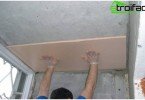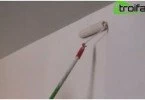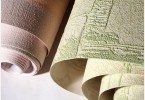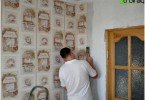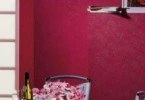How to remove wallpaper from the walls
If you are planning to change the wallpaper – great! A new color scheme, texture, pattern – this is a new mood, a completely new interior! Perhaps you have already looked for nice wallpapers? In order for the plan to be fulfilled, and the new wallpaper to hold well, not bubble or peel, it is important to properly prepare the surface: remove the old wallpaper, putty cracks, primer the walls. In this article we will look at how to remove wallpaper from the walls with “little blood”, without any special material costs and nervous shocks.
Content
- Tools and materials
- Work order
- If you can’t remove the wallpaper in the usual way
- How to remove vinyl wallpaper
- Parting with an old non-woven
- How to “free” drywall from wallpaper
- How to remove liquid wallpaper
If you have to take a wallpaper with plastered cement mortar, a puttied and primed wall, and if you used ordinary wallpaper glue, and although the wallpaper lost its appearance, it didn’t lose its strength (it’s not torn at hand) – consider yourself lucky, because You can remove old wallpapers in a few minutes! But if the wallpaper is thin, easily torn, and even glued them to PVA glue – you will find it easier plasterboard wall, how to get rid of the hated residues of unnecessary wallpapers. But nothing is impossible! After reading the article, you will learn how to remove old wallpapers, even if they were glued “forever and ever”. Of all types of wallpaper, the hardest to remove is the old paper wallpaper of the Soviet era. Firstly – this is due to the features of the wallpaper itself. Secondly, with the qualitative characteristics of the glue used in those days, at best – CMC, at worst – Bustilat, wood glue, PVA. Such wallpaper is almost impossible to tear off with a whole canvas. Involuntarily the question arises, how to remove the wallpaper in this case? – They have to be scraped with effort, centimeter by centimeter. This is a rather tedious task, but there has to be a way to make work easier? – Of course have! There are several of them! Armed with the acquired knowledge, you get to work, marveling at how easy it is to take off old wallpapers.
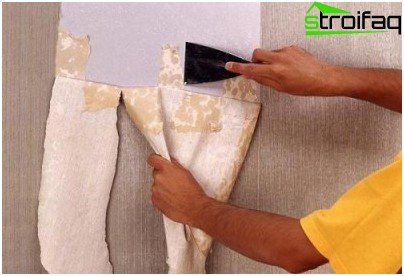
Before gluing the walls with new wallpaper, the old material must be completely removed
In the old days, before wallpapering, walls were prepared by sticking newspapers. If the walls already had wallpaper, then they were not removed, but simply pasted over new ones over the old ones. Over the years, many layers of wallpaper could be accumulated on the walls, firmly glued to each other. Leaving such ugliness on the wall is not hygienic: mold and various insects often start in such multilayer wallpapers. This causes an unpleasant odor in the apartment..
This situation is especially dangerous when there are small children in the house, because damage to the walls by mold and fungi is the main cause of allergic diseases. There are several ways described below to free walls from all these remnants of the past..
Tools and materials
- a bucket of warm water, in which it is better to add a dishwashing detergent;
- paint roller, foam sponge or sprayer.
- metal spatula or scraper;
- ladder;
- masking tape;
- polyethylene film;
- chemical washings for wallpaper;
- knife;
- metal brush;
- iron and cotton flap.
It is more convenient to shoot the wallpaper from top to bottom. First of all, you should pry off the upper edge of the wallpaper with a spatula, then pull it down, prying off badly lagging places. That may be quite enough. But if the wallpaper does not go well, additional moisture will be needed to soften the old glue. Let’s consider in detail how to quickly remove old wallpapers.
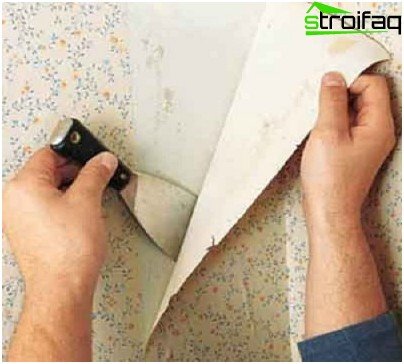
It is convenient to remove the wallpaper from top to bottom, “picking up” firmly attached areas with a spatula
Work order
- Before proceeding with the removal of wallpaper, it is necessary to observe elementary rules of technical safety, because on the walls there are electric switches and sockets. And in work, you may have to use water or other conductive fluids. Therefore, for the duration of the work to remove the wallpaper, you must turn off the electricity. Next, glue sockets, wires and switches with masking tape
- With a scotch tape, you must glue a plastic film with a width of at least 50 cm to the baseboard. Again, the other end of the film should be glued using a masking tape to the floor. This will facilitate the cleaning process..
- Now you need to properly soak the old wallpaper with warm water with a dishwashing detergent or liquid soap, wait 10-15 minutes and re-wet. In this case, you do not need to immediately take on a large area, because while you scrape in one place, in another it will already have time to dry. For better penetration of water, the surface of the wallpaper should be scratched with a knife or scraper. After swelling, clean the old wallpaper with a spatula. You can apply special chemical washes for wallpaper. To do this, according to the instructions, it is necessary to prepare a solution and apply it to the surface of the wallpaper with a sponge or spray. Such washing solutions have high permeability and well destroy the adhesive layer, after which the removal of wallpaper is not difficult.
If you can’t remove the wallpaper in the usual way
If soaking does not give the desired result (all of a sudden glue like PVA or Bustilat was used for wallpapering), try steaming the wallpaper with a piece of wet cotton cloth and an iron. Squeeze while the wallpaper is hot.
If there are still residues of glue on the walls that cannot be removed in any way, remove it with a large emery cloth, preferably with a grinder. Roughnesses remaining on the walls will need to be puttied.
Modern wallpaper is much easier to remove than old.
- Firstly, most modern wallpapers are two-layer, which provides for the possibility of delamination. In this case, you can remove only the outer decorative layer, which has lost its appearance, and the “substrate” will remain on the wall and will serve as the basis for new wallpapers.
- Secondly, modern wallpaper glue has good adhesive properties and at the same time it is easily dissolved by special washes or even warm water, which greatly simplifies the process of removing wallpaper.
Wallpaper can be paper (single and multi-layer, smooth and textured), moisture-resistant on a non-woven basis, as well as glass. Moisture-resistant wallpaper is well removed from the plastered surface with a spatula. The thing is that such wallpaper is much stronger than paper, less torn. The removal method is determined by the type of wallpaper and the nature of the surface on which they were glued. Walls can be with a strong moisture resistant surface or plasterboard. The universal method for removing old wallpapers has been described above. But the question inevitably arises: how to remove washable wallpapers. Let’s consider in detail.
How to remove vinyl wallpaper
Vinyl is a washable wallpaper that has two layers. The first layer is the base, which is glued to the wall surface, it can be paper or non-woven. The second is vinyl (polyvinyl chloride), which gives the wallpaper moisture and decorative properties. It is completely optional to remove these wallpapers from the walls; they provide for the possibility of removing only the outer polyvinyl chloride layer. The base remains on the wall, provided that it is firmly glued. Depending on the base material, vinyl wallpapers are paper and non-woven. If it is necessary to remove completely paper vinyl wallpaper, you can first tear off the outer layer, and soak the base with water and peel off with a metal spatula.
Parting with an old non-woven
It is advisable to remove only the outer layer, since the remaining non-woven, strengthening the wall, will serve as a good basis for new wallpapers. If you decide to remove the wallpaper completely, then the non-woven base is stronger than the paper one, therefore it is easier to remove it. Usually it is enough to pry the edge with a spatula and gently tear it from the wall from top to bottom, helping the trowel to tear off hard-to-lag places. If necessary, during tearing, the inner layer can be moistened with warm water..
When you have to remove the wallpaper from the walls plastered with cement plaster, puttied and primed before wallpapering – you can not be afraid to damage the wall with excessive moisture – because in this case we will deal with a solid surface, but how to quickly remove old wallpaper from a surface that is afraid of moisture ? Let’s consider this question in more detail..
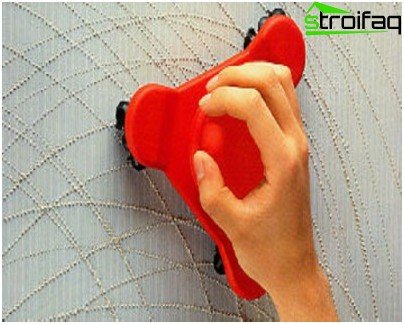
Wallpaper punching device
How to “free” drywall from wallpaper
It is undesirable to abundantly moisten the surface – you can damage the drywall by removing the wallpaper with cardboard. In the event that the drywall was not primed before wallpapering, then it will be almost impossible to remove wallpaper from it without damaging the cardboard layer. In order to remove the old wallpaper, it is better to use special washes. To increase the effectiveness of the wash, the surface of the wallpaper must be scratched or notched; perforation can be done with a knife, spatula, gear roller or a special wallpaper tiger.
In especially severe cases, when not wallpaper paste was used, but for example PVA, you can try to remove the wallpaper with a thin layer of cardboard. Since cardboard consists of thin glued sheets of paper, you just need to peel the outer sheet. This should be done carefully, carefully peeling it with a paint knife. If you decide to remove the old wallpaper from drywall in this way, do not forget to putty and prime the surface before pasting new wallpapers.

After punching and moistening, the wallpaper is removed easier
How to remove liquid wallpaper
Liquid wallpaper is a decorative coating of walls and ceilings, consisting of flakes of cellulose or cotton with dyes and other components. The composition of liquid wallpaper has a water-soluble glue, with which they are held on the surface. This type of coating is good for ease of application and removal from the surface. The glue dissolves with water even after drying. In order to remove liquid wallpaper, you must first soak them well with warm water. A spray bottle, foam sponge or rag is useful here. It is advisable to wet the surface several times with plenty of warm water. After the liquid wallpaper is well swollen, they are cleaned with a scraper or a metal spatula. Interestingly, the mass removed from the wall can be reused if desired..
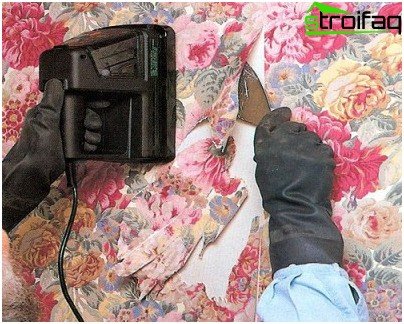
Work will progress faster if you use a steam remover to moisten the glued wall
If the repair is delayed, and you are running out of time, information on how to remove wallpapers quickly and save your valuable time may be useful. You can use professional tools, such as a steam puller. This device is good in that it simultaneously heats and moisturizes the surface of the wallpaper. Using superheated steam can effectively remove wallpaper and old dried glue. Impact on the wall surface – minimally.
Old wallpapers can be removed with a film. Watch the video, it is possible that you will like this particular option.
Creative work often involves painstaking work. In the repair preparatory work takes a significant part of the time, but you can not do without them. As you can see, it’s not so difficult to remove old wallpapers from the walls, it’s only important to consider some of the features of the materials used.


